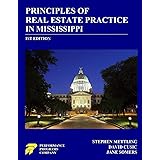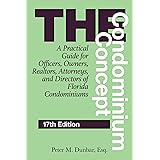In the dynamic realm of real estate investing, the perennial question of whether to focus on flipping houses or acquiring rental properties continues to ignite spirited debate. As Brendan Turner and Cam Cathcart expertly discussed in the engaging video above, both strategies offer distinct avenues for wealth creation, each with its unique benefits and hurdles, particularly in the current economic landscape of 2025.
For aspiring investors, understanding the nuances of these approaches is crucial. While flipping often promises quicker returns, rental properties generally aim for long-term equity growth and consistent income. However, the path isn’t always clear-cut, especially with fluctuating interest rates and market conditions.
Flipping Houses: The Active Path to Accelerated Gains
Flipping properties involves buying distressed homes, renovating them, and then reselling them for a profit within a relatively short timeframe. This strategy often appeals to individuals seeking to generate significant capital quickly. It’s a hands-on endeavor that demands sharp market insight, efficient project management, and a robust network of contractors.
The Allure of Active Income Through Flipping
Cameron Cathcart, a seasoned house flipper, champions this approach, emphasizing its potential for substantial earnings. He points out that flipping offers a direct and active income stream, allowing investors to leverage their skills and time for immediate financial gain. For example, even just 10 successful flips in a year, each yielding an average net profit of $50,000, translates into an impressive $500,000 annual income. This level of earning can significantly surpass what many individuals achieve in traditional W2 jobs.
Many find the control and direct impact on profit deeply satisfying. You’re not waiting years for appreciation; you’re actively creating value. Furthermore, a well-executed flip can provide the necessary capital to then explore other investment avenues, including building a rental portfolio.
Navigating the Risks of House Flipping
Despite the high-reward potential, flipping houses undeniably carries inherent risks. Brendan Turner candidly refers to flipping as “a job,” highlighting the intensive work and daily management required. Market fluctuations, unexpected renovation costs, and delays can quickly erode profits, or even lead to losses. A shift in buyer demand or rising material costs can turn a projected gain into a financial setback.
Mitigating these risks requires diligence and expertise. Investors must accurately assess property values, meticulously budget for repairs, and develop strong relationships with reliable contractors. Learning to run numbers correctly and implementing robust systems and processes are key to staying on schedule and within budget, thereby safeguarding your investment against common pitfalls.
Rental Properties: Building Long-Term Wealth (Beyond the “Passive” Myth)
Rental property investing traditionally focuses on acquiring properties to generate steady rental income and benefit from long-term appreciation. This strategy is often associated with the promise of “passive income” and financial freedom. However, the reality, as both Brendan and Cam attest, is more nuanced.
Challenging the Passive Income Dream
The notion that rental properties are entirely passive, especially in the early stages, is a common misconception. As Cam points out, even with over 50 rental doors and an in-house property management company, the process is far from hands-off. Issues like tenant turnover, maintenance emergencies, and administrative tasks consistently demand attention and effort. Brendan likens the initial stages of rental investing to starting at the gym: it’s hard, you’re sore, and results aren’t immediate. However, with persistence and improved systems, it becomes easier and more rewarding over time, eventually leading to a more hands-off operation.
This long-term perspective is where rental properties truly shine. The initial active involvement lays the groundwork for future stability and wealth accumulation. Over a decade, with a well-managed portfolio, much of the day-to-day work can indeed be outsourced, allowing the investor to enjoy the fruits of their earlier labor.
The Impact of High Interest Rates on Traditional Rentals
One of the most significant challenges for rental property investors in 2025 is the current interest rate environment. With rates hovering around 8%, achieving positive cash flow through traditional rental strategies has become exceptionally difficult. The common “1% rule” (where monthly rent equals 1% of the purchase price) is no longer sufficient; investors now often need to hit a 1.5% to 2% rule to truly cash flow after all expenses.
Consider a property purchased for $200,000. Under the 1% rule, it would need to rent for $2,000 per month. However, at a 1.5% rule, the same property would need to rent for $3,000 per month to realistically generate positive cash flow. This accounts for all the “phantom cash flow” expenses that many new investors overlook, such as capital expenditures (CapEx) for replacing roofs or water heaters, ongoing maintenance, potential vacancies, property management fees, taxes, and HOA dues. These costs significantly impact net operating income, making it crucial to analyze deals with a comprehensive understanding of all financial outflows.
Moving Beyond Traditional: Active Rental Property Income
Given the challenges with traditional rental strategies, Brendan suggests shifting towards “active rental property income.” This involves taking on more complex projects, often those that require significant renovation or a specialized management approach, but ultimately yield much higher cash flow. For instance, instead of buying a turnkey single-family home, an investor might acquire a seven-unit property that needs extensive repairs.
While this requires a substantial amount of work and project management, at the end of a year-long renovation, the property could generate $2,000 per month in pure cash flow. This translates to $24,000 annually, which compounds over time. Expanding on this concept, converting properties into mid-term rentals, short-term rentals, or even assisted living facilities can significantly boost income potential. These strategies move rental investing closer to a business model, where increased effort and specialized management directly lead to greater financial rewards and faster wealth accumulation.
The Synergy: How Flipping and Rentals Can Work Together
The hosts ultimately agree that for many, especially those starting without significant capital, the optimal strategy isn’t choosing one over the other, but rather integrating both. Flipping can serve as an excellent vehicle to generate the upfront capital needed to then invest in rentals. This symbiotic relationship allows investors to build an active income stream while simultaneously laying the foundation for long-term passive wealth.
The BRRRR Method in Today’s Market
The BRRRR (Buy, Rehab, Rent, Refinance, Repeat) method is a prime example of how flipping skills can fuel rental portfolio growth. It involves finding undervalued properties, renovating them, renting them out, and then refinancing to pull out your initial capital to repeat the process. Cam highlights that strong flipping abilities, particularly finding deals at 65-70% of After Repair Value (ARV) minus repairs, are essential for successful BRRRR investing.
However, high interest rates present a current hurdle for the refinance component of BRRRR. Cam provided a specific example: an investor buys a house for $120,000, invests $60,000 in renovations, making their all-in cost $180,000. The property appraises for $240,000 after rehab and would rent for $1,900 per month. Due to debt service coverage ratio (DSCR) requirements (typically 1.1-1.2), banks will often base the loan amount on the property’s income-generating potential, not just its appraised value. In this scenario, the bank might only offer a $125,000 loan, leaving $55,000 of the investor’s capital tied up in the deal. This illustrates that while BRRRR remains a powerful concept, current market conditions necessitate a deeper understanding of financing constraints.
Who Should Invest in Flipping Houses or Rental Properties?
The decision to pursue flipping, rental properties, or both, depends heavily on an individual’s financial situation, time commitment, risk tolerance, and willingness to learn. Both strategies demand dedication and a strategic approach to navigate the complexities of the real estate market effectively.
Who Might Consider House Flipping?
Individuals with a higher tolerance for risk and a substantial amount of time to dedicate to active project management are well-suited for flipping. This path is ideal for those who enjoy the hands-on process of transforming properties and are adept at managing contractors and budgets. Flipping can be an excellent way to exit a W2 job by generating significant active income, which then provides the freedom and capital to pursue other real estate ventures, including rental properties. However, it’s not for the “weekend warrior” who lacks time, resources, or foundational knowledge.
Who Should Explore Rental Properties?
Cameron Cathcart believes almost everyone should consider owning rental properties, citing the trifecta of loan paydown by tenants, appreciation, and potential cash flow. While the “passive” aspect is often overstated, the long-term benefits of wealth accumulation and inflation hedging are undeniable. Rental properties are generally better for those who prioritize long-term asset building over immediate large profits, and who are prepared for the initial active management required to establish a stable portfolio.
The Crucial Role of Education and Commitment
Ultimately, both Brendan and Cam emphasize that success in any real estate investment strategy hinges on a strong commitment to education. Simply “winging it” with tens of thousands of dollars at stake is a recipe for disaster. Investors must be willing to read books, listen to podcasts, watch educational videos, attend conferences, and join investor groups to gain the necessary knowledge and skills. Real estate investing, whether through flipping houses or rental properties, is a serious business that requires continuous learning and a dedicated effort to understand market dynamics, financial calculations, and risk management.
For those already highly successful in another career or business, it’s also worth considering whether diversifying into a new, complex field like real estate is the best use of time and capital. Sometimes, doubling down on an existing thriving business and investing the additional profits into established real estate funds or syndications can be a more efficient path to wealth growth, rather than starting a new real estate venture from scratch.









